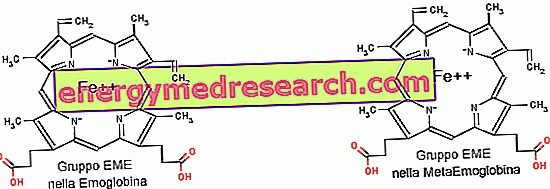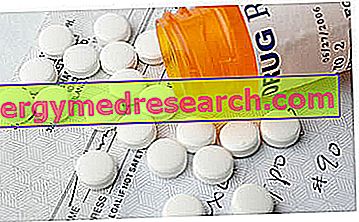
Methaemoglobin is a protein similar to hemoglobin, from which it differs due to the different state of iron oxidation. In fact, the iron present in the -EME group of methaemoglobin is oxidized to ferric ion (Fe3 +), while in hemoglobin it is found in the form of ferrous ion (Fe2 +). The passage of iron oxidation from a bivalent state to a trivalent state, makes the methaemoglobin incapable of carrying oxygen in our body.

Within the red blood cell, in normal conditions, small amounts of methaemoglobin are always formed, readily eliminated by particular enzymatic systems.
The accumulation of methaemoglobin in erythrocytes can occur due to acquired or hereditary causes. The acquired causes are the exposure of the organism to oxidizing chemical substances and to drugs, while the congenital ones are mainly due to an enzyme deficiency (deficiency of the enzyme methemoglobin-reductase).
In our body, in order not to run into unpleasant consequences, methaemoglobin must have a maximum concentration of 1% of total hemoglobin. When methaemoglobin far exceeds this threshold value, we can speak of methemoglobinemia. Fortunately, as anticipated, our organism has mechanisms capable of reducing the methaemoglobin that has spontaneously oxidized (about 3% per day); these mechanisms involve the intervention of the enzyme NADH cytochrome-b5 reductase, present in erythrocytes and otherwise known as methaemoglobin-reductase. Thanks to the intervention of this enzyme the amount of methaemoglobin is constantly kept below 1%.
Causes
The possible causes responsible for the excessive formation or accumulation of metaemolgobin, and the consequent onset of methemoglobinemia, are:
- REDUCED CELLULAR DEFENSE MECHANISMS induced by a hereditary deficiency of the enzyme NADH cytochrome-b5 reductase and / or exposure to hazardous chemicals;
- PHARMACEUTICAL COMPONENTS such as amyl nitrite, chloroquine, dapsone, nitrites, nitrates, nitroglycerin, nitroprusside, quinones, sulfonamides and all compounds used in local anesthesia;
- ENVIRONMENTAL AGENTS such as aromatic amines (for example p-nitroaniline), arsine, chlorobenzol, salts of chromic acid and finally nitrites and nitrates;
Symptoms of methaemoglobinaemia
Patients with methemoglobinemia do not show any particular symptoms. A characteristic sign of methemoglobinemia is cyanosis, with or without cardiac and / or respiratory phenomena. The term cyanosis indicates a particular blue-brown color of the blood, which gives the skin and mucous membranes a bluish complexion.
The increase in blood levels of methaemoglobin can also lead to the appearance of headache, dyspnea and finally to asthenia.
Diagnosis
The only laboratory tests useful for the diagnosis of methaemoglobinaemia are the spectroscopy of the liquid derived from the hemolysis of erythrocytes and the hemoglobin electrophoresis
Therapy
Methaemoglobinaemia therapy involves the intravenous administration of two substances, ascorbic acid or methylene blue.
Methylene blue is an organic substance that has a strong reducing activity, capable of transforming iron from ferric ion to ferrous. Depending on the severity, the methylene blue dosage administered can vary from 60 to 70 mg a day. The dose, given its dangerousness, must always be decided by a doctor.
Ascorbic acid, also known as vitamin C, is one of the substances useful in the treatment of methaemoglobinaemia, because, similar to methylene blue, it has a reducing activity on iron (transforming it from ferric to ferrous).



